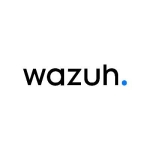We have deployed Trend Micro XDR on all our endpoints. It is deployed as an agent because we are using Trend Micro Apex, the antivirus agent, and the SaaS agent. This means that we receive notifications from XDR for any suspicious activity related to endpoints. For example, if a user connects to a suspicious website, XDR should alert us based on our rules. It can also generate alerts for malicious Windows activities.
In addition to deploying XDR on our endpoints, we have connected Vision One XDR to our Office 365 email platform. This allows XDR to read incoming emails. We can then configure rules to remove emails from mailboxes if they have certain properties or are particularly suspicious.
We have also connected XDR to our Azure platform, which is our user authentication platform. XDR can monitor for risky user sign-ins, such as sign-ins from unusual locations. If it detects any risk, it will notify us.
Finally, we have integrated XDR with a third-party tool to receive indicators of compromise. When we receive an IOC, Vision One will automatically run a check in our environment to see if any endpoints have been compromised. It will also check to see if any emails have been sent from any of the senders in the IOC listing. If it finds any matches, it will notify us.
We can also configure playbooks to automatically take action when XDR detects a threat. For example, we could configure a playbook to force a user to reset their password or isolate an endpoint from the network.
We are using the Trend Micro Vision One XDR agent. This agent component is installed on all of our endpoints, including servers, workstations, desktops, and any other computer elements. Vision One also has an API-based element, which we have connected to our email system, such as Azure.
Before Vision One, we had limited visibility into our security posture. Things were happening all around us, but we couldn't see them. With Vision One, we have centralized visibility and management across all of our protection layers, so we can see and respond to threats quickly and effectively.
I cannot imagine my day-to-day operations without the visibility that Vision One provides. It makes all the difference. No other platform compares to Vision One in terms of simplicity, ease of use, and importance.
Vision One has improved our efficiency with centralized visibility. Before Vision One, we had to go to different platforms and tools in our environment. Sometimes the information was missing and sometimes we were searching with the wrong terms. But because I can now see everything at once, it has helped. The decision we are making now is simply to go there, and whatever we have been faced with, the console is enough to make a decision.
We just signed a contract for Managed XDR services. We were managing our security before, but we'll start using their managed services next year. We've received a few escalations from them already, but that's because they're proactively searching for threats, which is a good thing. For example, I got an escalation from them last week for something that we wouldn't have discovered on our own. It wasn't something that the tool would have generated an alert for either, because it was very similar to what a user would normally do. But they were able to find it because they're looking into all of the addresses that they have. This led to us being able to control incidents that would have happened otherwise.
The XDR service has saved us time, enabling us to work on other tasks. The environment is quite complex, so before we had XDR, we didn't have any tool that considered all possibilities or provided any visibility into our environment. When we first started using the tool, it was new to us, but after a couple of years of using it, we've found that it is a legitimate tool that provides valuable information. Instead of seeing it as adding more work to our workload, we see it as helping us to be more proactive and prevent future incidents. For me, it has been a great help and has added real value to our work.
XDR helped us reduce our time to detect and respond to threats. With a single click, I can isolate a computer from the rest of the compliant environment. I had to do this last week when I had to support two escalated computers. Without XDR, there would be hundreds of things that we would not have seen or known about. But with XDR, we can see everything. And that even includes coverage of devices or computers that are not owned by us, such as those used by vendors. If a vendor brings a malicious device onto the property and downloads something malicious, we can detect it as early as possible.
Trend Micro XDR has helped us reduce the time we spend investigating false positive alerts. I am 100 percent confident that everything that comes out of the platform is legitimate. We had a few false positives when we first started using the solution, but because Trend Micro allows us to whitelist specific items, we were able to build our policy accordingly. Sometimes, there are malicious items that we need to allow because of our environment, such as certain security tools. Trend Micro allows us to build a policy that excludes these items from alerts, so we no longer receive alerts for them.
We use the XDR automation capabilities extensively, including playbook automation for tasks like isolating computers, and API-based automation for most other tasks. For example, we are a member of the retail ISAC information-sharing platform, and we have automated scripts from that platform that pull in all malicious senders, IPs, and domains, and pool them into XDR. XDR then automatically scans all computers to see if any of these malicious entities exist. If they do, XDR generates an alert and allows us to take action, such as removing the file. We generally set XDR to allow only, so that we have visibility into all malicious activity, even if we don't take action on it.
I would like to have the capability to export the information we receive from the XDR into Microsoft Excel.
I have been using Trend Micro XDR for almost four years.
Trend Micro XDR is stable. We have not experienced any stability issues when using the console.
I do not have access to the backend, so I am not aware of the specific technical details. However, from an end-user perspective, the scalability of the system appears to be excellent.
I reach out to technical support almost every week to address any questions I have. I also have a bi-weekly meeting with their technical team. They guide open tickets and address any concerns we may have. Additionally, we have a monthly meeting with Vision One developers where they discuss upcoming features and seek input. I know exactly who to contact for any assistance I may need. Sometimes, I can simply email them directly instead of opening a ticket. The process is always straightforward and efficient. At times, the prompt responses make me wonder if they are using AI assistance, but I hope that's acceptable. I usually receive a response within a minute or two, which suggests AI involvement. However, the signature at the end of the IT person's email confirms that an actual person is handling my request.
We had Carbon Black, but we're using it only for application control. With Trend Micro XDR we can detect and respond.
The initial deployment was straightforward. I have extensive experience in deployments across various companies and platforms. However, Trend Micro XDR surpassed all my expectations. We had previously deployed on-premises, and all we had to do was access the designated console and click a button to migrate all on-premises agents to cloud agents. It was incredibly easy. My team of two and I handled the entire process without any involvement from the teams and properties. I right-clicked and moved everything over. A few agents remained unmovable due to their outdated versions, but we successfully migrated close to 99 percent of all agents.
The implementation was completed in-house. Trend Micro provided a document link to help with the deployment.
Trend Micro XDR is reasonably priced for its value, comparable to other products like VMware Carbon Black.
We evaluated an additional option with Carbon Black because we already had that agent in our environment. We also considered Cisco, which has its own XDR platform.
I would rate Trend Micro XDR ten out of ten.
We tried to use the risk index feature, but I didn't have the resources to focus on it at the time. I was more focused on the actual findings that were happening. I have since hired someone who will focus on the risk index, as the primary reason I hired them is to focus on the risk element coming from Vision One, as well as from other third-party intelligence platforms that we work with or have contracts with. Now that I have someone here, we will be focusing on the risk index.
No maintenance is required.



















